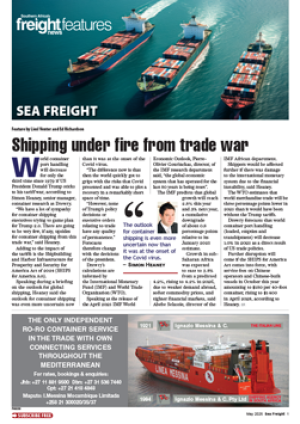ALAN PEAT
THE LOCAL clothing and textile industries will face new regulations related to the marking of these products from May 23, according to the Government Gazette notice 2140 on changes to the Merchandise Marks Act of 1941.
“In terms of the new regulations, any imported garment entering SA after May 23 needs to have a permanently affixed label stating its country of origin together with the importer’s registration number,” Jack Kipling, president of the clothing industry body, CloTrade, told FTW.
In the case of locally produced garments, Kipling added, an additional clause states that for a garment to carry a “Made in South Africa” label, it must be wholly assembled in SA.
“An additional change to locally produced merchandise is that - instead of the company registration number being required on the garment - it will require a tax payer identification number.”
This can either be the company income tax number or the VAT registration number – or, in the case of sole traders - it can be their personal tax number.
“The principal motivation for this,” said Kipling, “is to accommodate sole traders, who may not have company numbers.
“But it is also more beneficial to SARS customs, whose database already has the tax identification numbers - whereas they do not have company registration numbers.”
To cope with garments produced from imported fabric, it has been decide that these must carry a label stating “Made in South Africa from imported materials” – and also the taxpayer identification number.
Kipling explained that, for clothing, chapters 61 and 62 of Jacobsen’s Harmonised Tariff apply, and hats and headwear under chapter 65 have now been included.
For textiles, meanwhile, these are as listed in chapters 50, 51, 52, 53, 54, 55, 56, 57, 58, 59, 60 and 63 of the tariff book – and for shoes and leather goods, chapters 42, 43 and 64.
“All other fibre content labelling requirements have been replaced by simply referring to Notice 2410 of 2000,” he added, “which is the SABS standards for fibre content and care labelling that has been effective since June 30, 2000.”
Textile industry faces new labelling regulations
13 May 2005 - by Staff reporter
0 Comments
FTW - 13 May 05
13 May 2005
13 May 2005
13 May 2005
13 May 2005
13 May 2005
13 May 2005
Border Beat
Featured Jobs
New
New
New
